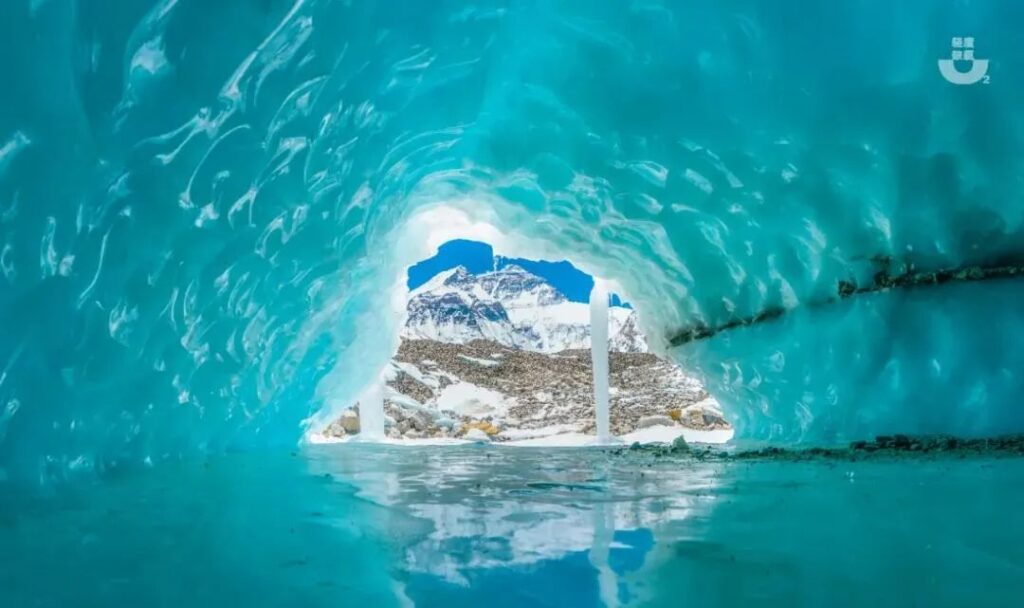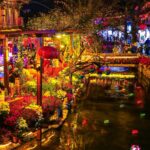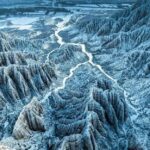China is a glacier powerhouse, boasting over 40,000 glaciers. These icy giants stretch from the Altai Mountains in the north to the Jade Dragon Snow Mountain in Yunnan to the south, and from the Pamir Plateau in the west to Mount Gongga, the “King of Sichuan Mountains,” in the east.
This “glacier world” cascades between heaven and earth, some winding tortuously, others surging majestically. Each glacier possesses its unique beauty, but when it comes to China’s most beautiful glaciers, Tibet undoubtedly deserves a place on the list.
The glaciers of the Qinghai-Tibet Plateau are like ice goddesses perched high above – noble, aloof, unreachable, and otherworldly.

In the southern part of Shigatse region, deep in the Himalayas, lies the best place to approach the snow-covered plateau.
Here, you can get up close to snow-capped mountains and glaciers that have existed for tens of thousands of years, feeling as if you’ve stumbled upon the edge of the world. In this place, you’ll truly understand the meaning of “snow-covered plateau.”
The Majestic Rongbuk Glacier
Rongbuk Glacier is located in Basong Township, Tingri County, Shigatse region of Tibet, nestled in the Himalayan mountain range. “Rongbuk” in Tibetan means “valley head,” referring to the source of an ice valley.
Rongbuk Monastery, named after the glacier, sits at the terminus of the Rongbuk Glacier at the foot of Mount Everest. At an elevation of about 5,154 meters, it stands in a lofty and frigid terrain, making it the highest monastery in the world.
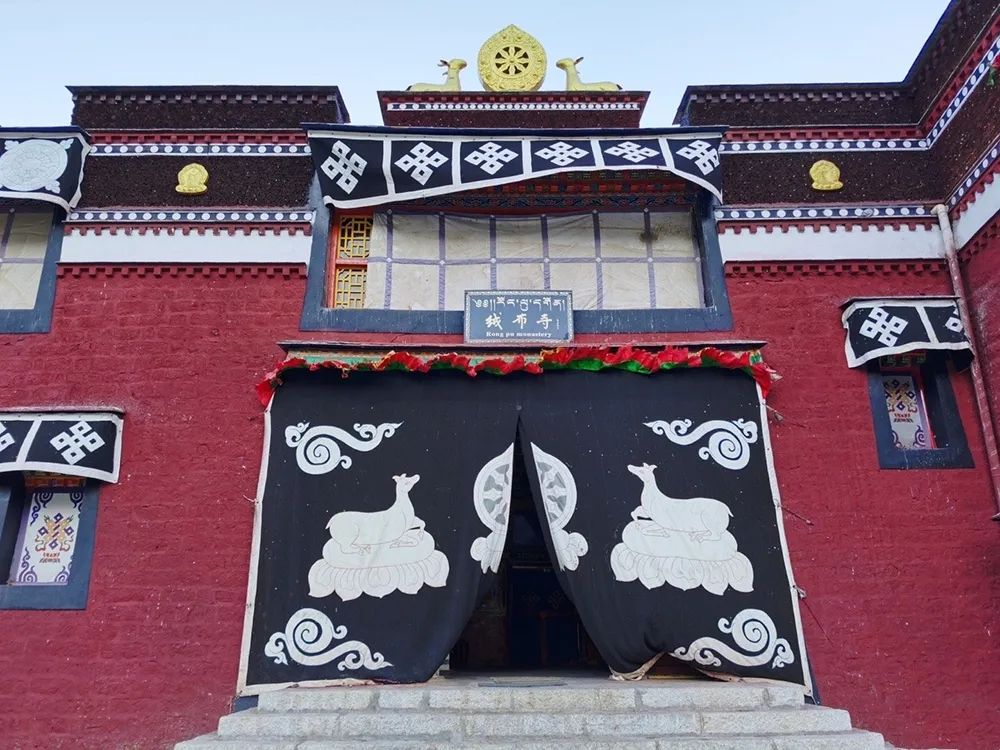
The Mount Everest region is home to over 200 glaciers of various sizes, with Rongbuk Glacier being the largest among them.
The average thickness of Rongbuk Glacier is 120 meters, with its thickest parts exceeding 300 meters.
These glaciers come in a wide variety of types, with their upper limits generally reaching 7,260 meters. The glaciers are primarily nourished by snow that has been transformed through the two major precipitation belts brought by the Indian Ocean monsoon.
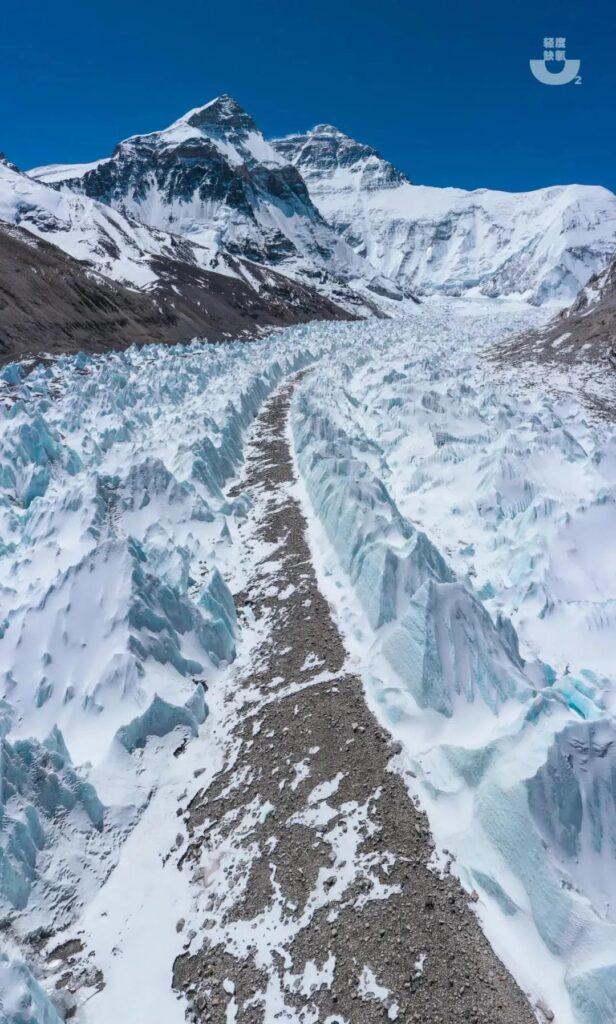
Rongbuk Glacier, being the largest in the Everest region, is renowned for its extraordinary glacial scenery. Mountaineers and explorers have dubbed it the world’s largest “high-altitude park.”
The term “Rongbuk Glacier” actually refers to a group of glaciers on the north slope of Mount Everest. It is generally divided into three directions:

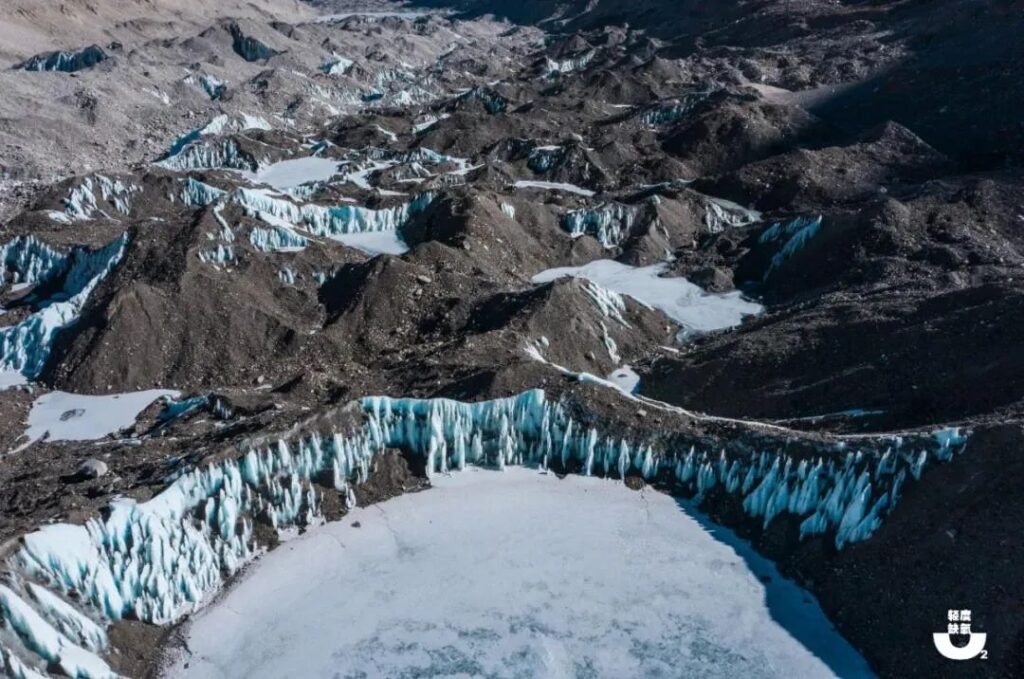

Remarkably, at the terminus of Rongbuk Glacier, one can observe ice tower forests, a phenomenon typically found only in low to mid-latitude regions.
These ice tower forests, known as penitentes, stand abruptly with a myriad of shapes and forms.
Some resemble intricately striped patterns, as if carved by supernatural forces.

Others take on the appearance of sharp swords.

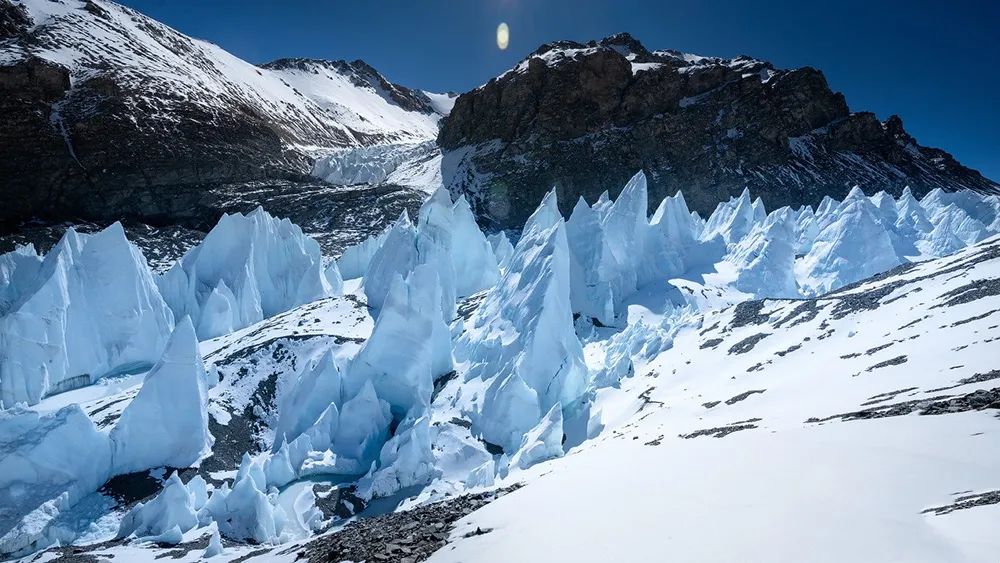
Interspersed among these formations are deep ice caves and winding ice rivers, creating a spectacle both peculiar and magnificent.
One cannot help but marvel at the sight, acknowledging that nature truly is the most outstanding artist of all.
